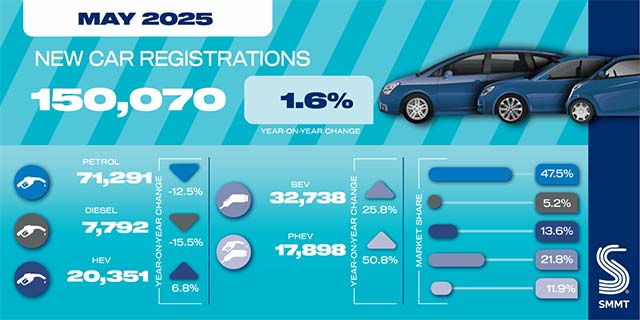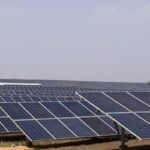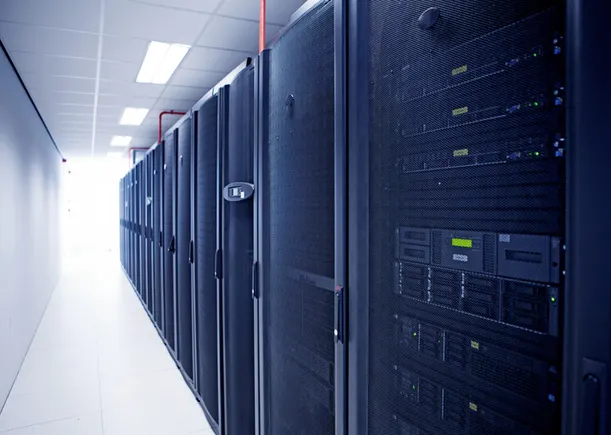Unstoppable Momentum in the Injection Molded Plastic Market
The injection molded plastic market is witnessing sustained growth, driven by expanding industrial applications, increased demand for lightweight durable materials, and continuous advancements in polymer technology. From automobile parts and food containers to intricate medical devices, injection molding is emerging as the manufacturing method of choice for complex, high-volume plastic products.
Global Injection Molded Plastic Market size and share is currently valued at USD 338.70 billion in 2024 and is anticipated to generate an estimated revenue of USD 471.35 billion by 2034, according to the latest study by Polaris Market Research. Besides, the report notes that the market exhibits a robust 3.4% Compound Annual Growth Rate (CAGR) over the forecasted timeframe, 2025 – 2034
Market Overview
Injection molding is a manufacturing process that involves injecting molten plastic into a metal mold to produce a wide array of intricate parts with precise dimensions. It is ideal for mass production, offering benefits such as minimal waste, fast cycle times, and consistent product quality.
The market is segmented by material type (including thermoplastic polymers like polypropylene, polyethylene, polystyrene, and ABS), application (such as automotive components, packaging, healthcare, construction, and electronics), and regional markets. The increasing integration of automation and sustainability practices is also reshaping how the industry operates.
Key Market Growth Drivers
1. Expanding Automotive Applications
The automotive industry remains one of the largest consumers of injection molded plastics, particularly for producing interior and exterior automotive components like dashboards, bumpers, grilles, and light housings. The drive for fuel efficiency has led manufacturers to substitute metal parts with lightweight plastic alternatives that maintain structural integrity while reducing vehicle weight.
Moreover, the transition to electric vehicles (EVs) is accelerating demand for injection molded components due to the need for compact and custom parts used in battery housings, thermal management systems, and EV-specific modules.
2. Rapid Growth in the Packaging Industry
The packaging industry—especially food, beverage, and personal care packaging—is another major driver of the injection molded plastics market. Injection molding is ideal for producing rigid containers, caps, closures, and specialized packaging with intricate shapes and barrier properties.
With increasing urbanization, rising e-commerce activity, and a growing consumer preference for single-use packaging, the need for cost-effective, high-volume, and customizable plastic packaging continues to expand.
3. Rising Demand in the Medical Devices Sector
The global healthcare industry’s demand for medical devices and disposables like syringes, inhalers, surgical instruments, and diagnostic components is contributing significantly to market growth. Injection molded plastics offer the biocompatibility, sterility, and precision required in medical applications.
The COVID-19 pandemic further highlighted the strategic importance of rapid, large-scale plastic part production for personal protective equipment (PPE), test kits, and ventilator components. The continued emphasis on hygiene and single-use instruments ensures sustained demand in this sector.
4. Innovations in Thermoplastic Polymers
Ongoing advancements in thermoplastic polymers—such as biodegradable plastics, bio-based resins, and engineering-grade polymers—are broadening the scope of injection molding. High-performance plastics like polyether ether ketone (PEEK), nylon, and polycarbonate are increasingly used in demanding applications across aerospace, medical, and electronics industries due to their strength, thermal resistance, and flexibility.
In parallel, innovations in additives, colorants, and recycling techniques are making thermoplastics more sustainable and customizable than ever before.
Browse Full Insights:
https://www.polarismarketresearch.com/industry-analysis/injection-molded-plastic-market
Market Challenges
Despite strong growth, the injection molded plastic market faces several obstacles:
1. Environmental Regulations and Plastic Waste Concerns
Heightened awareness about plastic pollution and stringent regulations by governments and environmental bodies are posing challenges to plastic product manufacturers. Although injection molding generates less waste compared to other methods, the end products still contribute to the overall plastic waste problem, particularly in the packaging industry.
Governments are implementing bans on single-use plastics and mandating recycled content in packaging, forcing manufacturers to re-engineer materials and adopt greener production practices.
2. Fluctuating Raw Material Prices
Injection molded plastics rely heavily on petroleum-based raw materials, and price volatility in crude oil directly impacts resin costs. Such fluctuations can create supply chain disruptions and margin pressures for manufacturers.
3. High Initial Tooling and Equipment Costs
While injection molding is cost-effective for large-volume production, the high upfront investment in molds and machinery is a barrier for small and medium enterprises (SMEs). Custom tooling is expensive and time-consuming, which can limit flexibility for low-volume or specialized production.
4. Complexity in Recycling and Sorting
The proliferation of multi-material and colored plastics used in automotive components and medical devices complicates recycling efforts. Mixed plastics are harder to sort and reprocess, requiring advanced technologies and increasing costs for recycling infrastructure.
Regional Analysis
North America
North America holds a significant share of the injection molded plastic market, driven by strong demand from the automotive, healthcare, and packaging sectors. The U.S. is a key contributor, supported by technological innovation, stringent product quality standards, and the growing adoption of bio-based plastics.
Additionally, the region’s well-established plastics recycling infrastructure and push for circular economy practices are encouraging companies to invest in sustainable injection molding technologies.
Europe
Europe is home to some of the most progressive regulations around plastic usage and recycling. The European Union’s Single-Use Plastics Directive and Extended Producer Responsibility (EPR) programs are pushing companies toward sustainable packaging and production processes. Germany, France, and Italy lead in innovation and demand for biodegradable and high-performance thermoplastic polymers.
The region’s emphasis on automotive electrification and medical device exports is also boosting the need for injection molded components.
Asia Pacific
Asia Pacific dominates the global injection molded plastic market, with China, India, Japan, and South Korea at the forefront. The region benefits from low-cost manufacturing, rising industrial output, and rapidly growing end-user industries such as construction, electronics, and packaging.
China remains the world’s largest producer and consumer of injection molded plastics, while India is emerging as a key hub for medical devices and automotive manufacturing. The proliferation of e-commerce and expanding urban populations are driving additional demand for consumer goods and packaging.
Latin America and Middle East & Africa
These regions represent emerging markets with untapped potential. Brazil and Mexico in Latin America are seeing increased investments in automotive and packaging production. In the Middle East, countries like Saudi Arabia and the UAE are expanding their downstream petrochemical industries to manufacture high-grade plastic resins used in injection molding.
Key Companies in the Injection Molded Plastic Market
The market is moderately fragmented, with global players competing alongside regional and specialized manufacturers. Key companies include:
-
BASF SE – A global chemical giant, BASF produces a wide array of thermoplastic polymers used in automotive, construction, and healthcare industries.
-
Dow Inc. – Offers innovative polyethylene and polypropylene solutions, with a focus on sustainability and advanced applications.
-
SABIC – A major supplier of high-performance plastic resins for packaging, electrical, and automotive applications.
-
LyondellBasell Industries – Known for its cost-efficient polypropylene and polyethylene resins widely used in injection molding.
-
INEOS Group – Supplies a broad portfolio of polyolefins and engineering plastics for automotive and industrial use.
-
Husky Injection Molding Systems – Specializes in injection molding equipment and systems for the packaging industry, particularly beverage closures and containers.
-
RPC Group (Berry Global Inc.) – Focuses on packaging solutions and molded consumer products with strong global presence.
-
HTI Plastics – Provides custom injection molding solutions for the medical devices and pharmaceutical sectors.
Emerging players are focusing on biodegradable plastics, 3D mold design integration, and micro-injection molding to carve out niches in the market.
Future Outlook
The injection molded plastic market is set to evolve in line with global trends in sustainability, digitalization, and advanced manufacturing. The integration of Industry 4.0 technologies—such as IoT-enabled smart molds, AI-driven quality control, and predictive maintenance—is transforming injection molding into a highly efficient and intelligent production process.
Sustainable practices, including the use of recycled materials, closed-loop systems, and biodegradable resins, are expected to become central to corporate strategies. As industries demand faster production, lower costs, and eco-friendly materials, the injection molded plastic market will continue to innovate and expand.
Conclusion
The injection molded plastic market stands at the confluence of innovation, demand, and environmental accountability. With applications spanning automotive components, medical devices, and the packaging industry, and driven by the adaptability of thermoplastic polymers, the market promises sustained growth through 2032. Key players must continue to adapt to evolving consumer expectations, regulatory frameworks, and technological disruptions to remain competitive in this dynamic industry.
More Trending Reports by Polaris Market Research:
Robotic Process Automation in BFSI Market
Robotic Process Automation (Rpa) Market
Automated Passenger Counting and Information System Market
Ushering A New Era of Trust with Blockchain
Why Are SAR Systems Being Increasingly Used in Military and Defense Applications?















































































































































